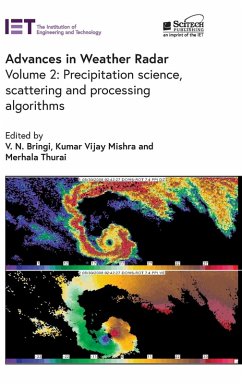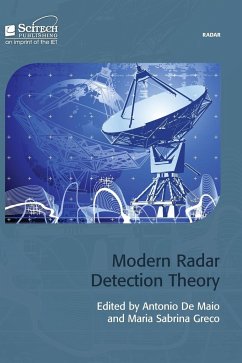
Tracking Filter Engineering
The Gauss-Newton and Polynomial Filters
Versandkostenfrei!
Versandfertig in über 4 Wochen
180,99 €
inkl. MwSt.

PAYBACK Punkte
90 °P sammeln!
The book provides a complete theoretical background, and then discusses in detail the Gauss-Newton filters. Of particular interest is a new approach to the tracking of maneuvering targets that is made possible by these filters. The book also covers the expanding and fading memory polynomial filters based on the Legendre and Laguerre orthogonal polynomials, and how these can be used in conjunction with Gauss-Newton. Fourteen carefully constructed computer programs cover the theoretical background, and also demonstrate the power of the Gauss-Newton and polynomial filters. Two of these programs include Kalman, Swerling and Gauss-Newton filters, all three processing identical data. These demonstrate Kalman and Swerling instability to which Gauss-Newton is immune, and also the fact that if an attempt is made to forestall Kalman and Swerling instability by the use of a Q matrix, then they are no longer Cramer-Rao consistent and become noticeably less accurate than the always Cramer-Rao consistent Gauss-Newton filters. This book will be of interest to filter engineering practitioners, to graduate-level newcomers wishing to learn about Gauss-Newton and polynomial filters and to university lecturers who might wish to include material on the Gauss-Newton and polynomial filters in graduate-level courses on tracking filter engineering."
This book provides a complete discussion of the Gauss-Newton filters, including all necessary theoretical background. This book also covers the expanding and fading memory polynomial filters based on the Legendre and Laguerre orthogonal polynomials, and how these can serve as pre-filters for Gauss-Newton. Of particular interest is a new approach to the tracking of manoeuvring targets that the Gauss-Newton filters make possible. Fourteen carefully constructed computer programs demonstrate the use and power of Gauss-Newton and the polynomial filters. Two of these also include Kalman and Swerling filters in addition to Gauss-Newton, all three of which process identical data that have been pre-filtered by polynomial filters. These two programs demonstrate Kalman and Swerling instability, to which Gauss-Newton is immune, and also the fact that if an attempt is made to forestall Kalman/Swerling instability by the use of a Q matrix, then they cease to be Cramér-Rao consistent and become less accurate than the always Cramér-Rao consistent Gauss-Newton filters.












